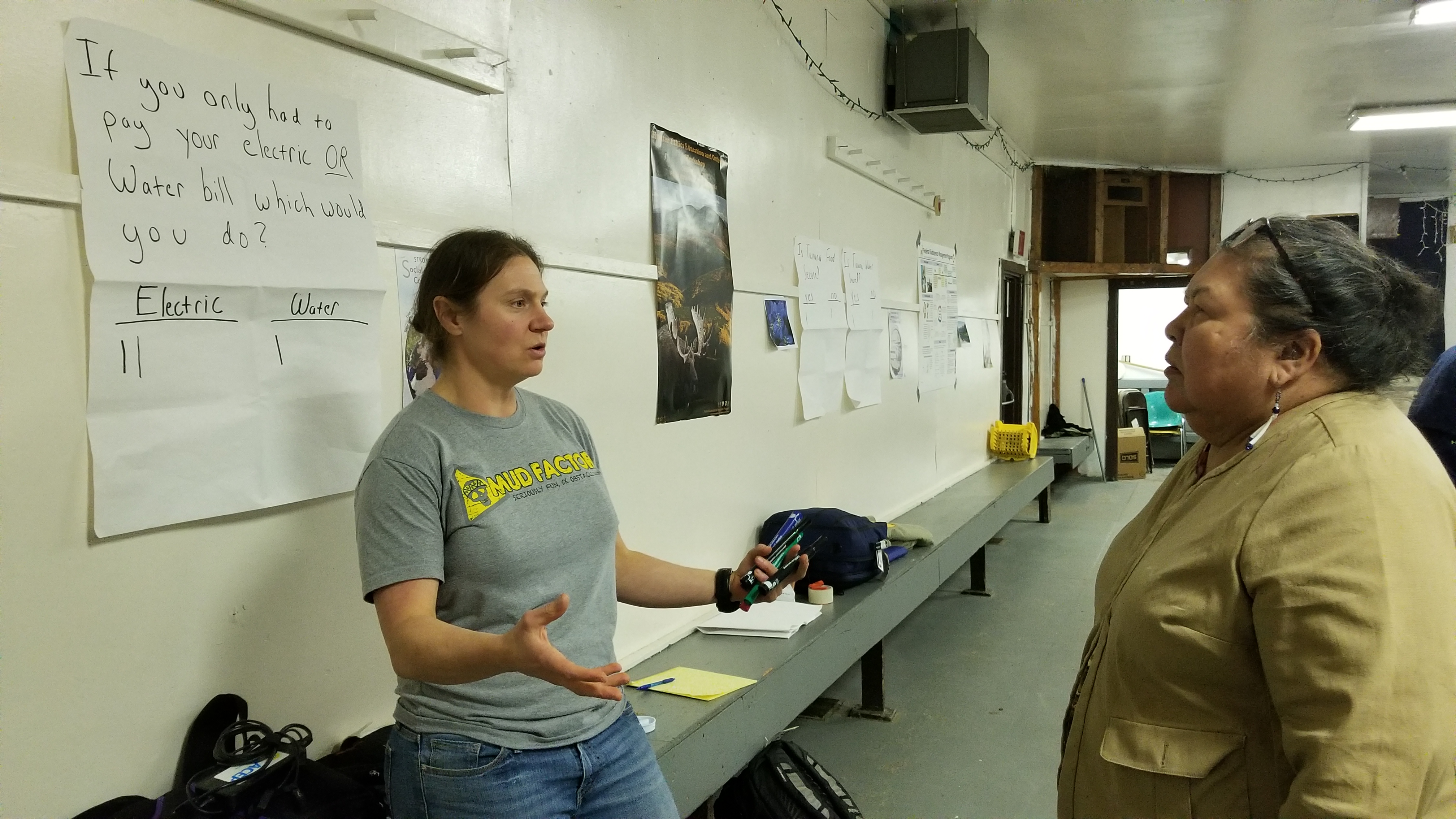What are the Trade-offs for Food, Water, and Energy in a remote community?

ACEP’s Amanda Byrd traveled to the Yukon River community of Tanana of last week with Jennifer Schmidt, of the University of Alaska Anchorage’s Institute of Social and Economic Research, and UAF research fellow Jennifer Curl to provide the community preliminary results from a wood harvesting and subsistence survey they conducted in the community last year.
As the ice started to build on the river, survey information was shared at a community meeting. The survey results included total community annual wood harvest, overall thoughts about the community’s biomass energy program, and information on the relationship between wood harvesting and subsistence food gathering.
At the meeting, more questions were asked in an open survey to gauge the community’s perception of Tanana’s food, energy and water security, and whether, in a pinch, available cash would be spent on water or electricity bills. Previous research in Northwest Alaska found that community members would pay electricity bills before water, and this survey looked to see whether Tanana followed that same pattern.
The community visit was part of the National Science Foundation-funded Adaptive Coupling of Human Environment Linkages and the four-year MicroFEWs project exploring the linkages between renewable energy use and its downstream impacts upon food, energy and water security in the remote Arctic and sub-Arctic communities.
ISER's Jen Schmidt speaks with Dorothy Jordan of Tanana about electricity and water bills. Photo by Amanda Byrd/ACEP.


